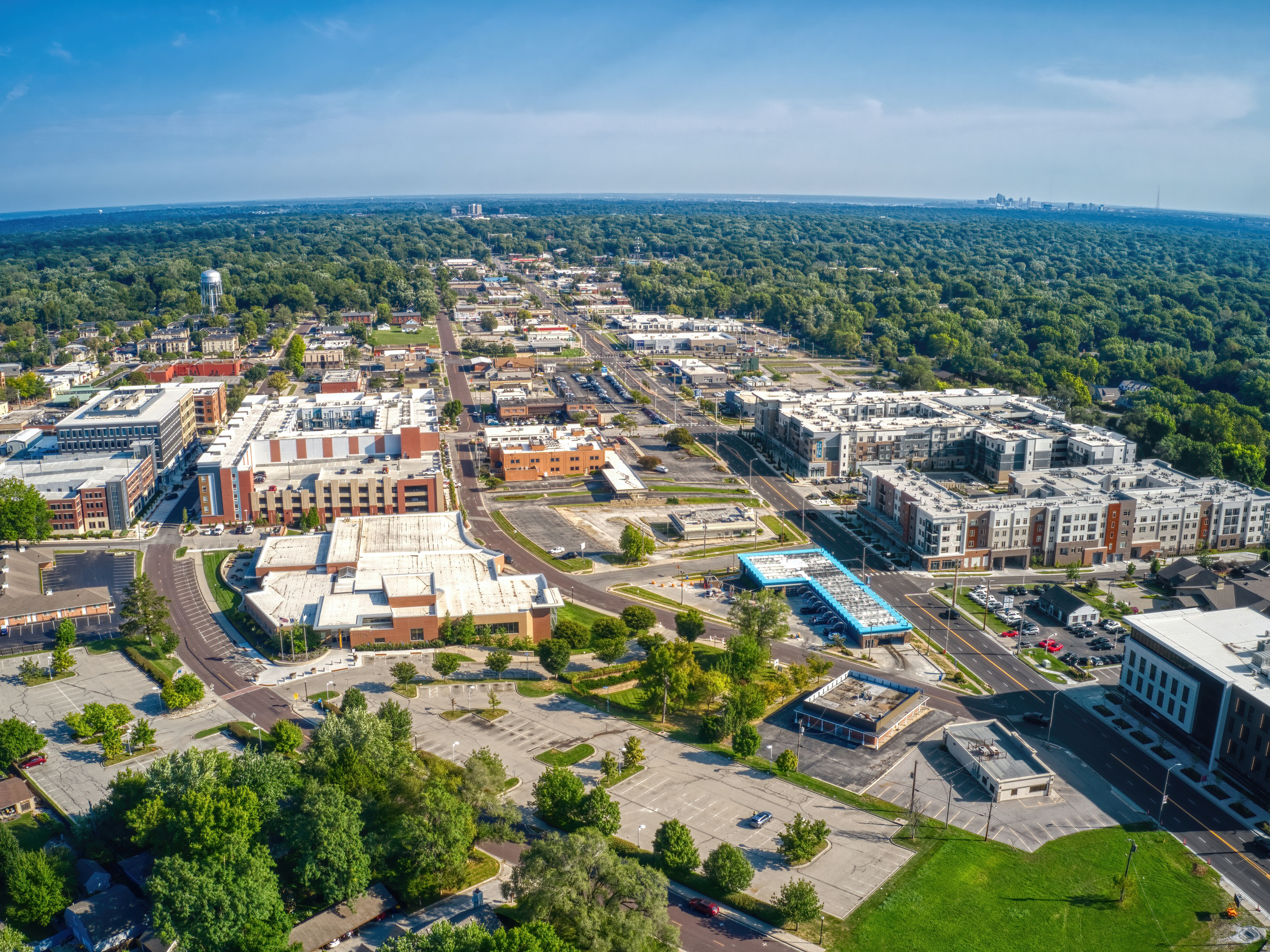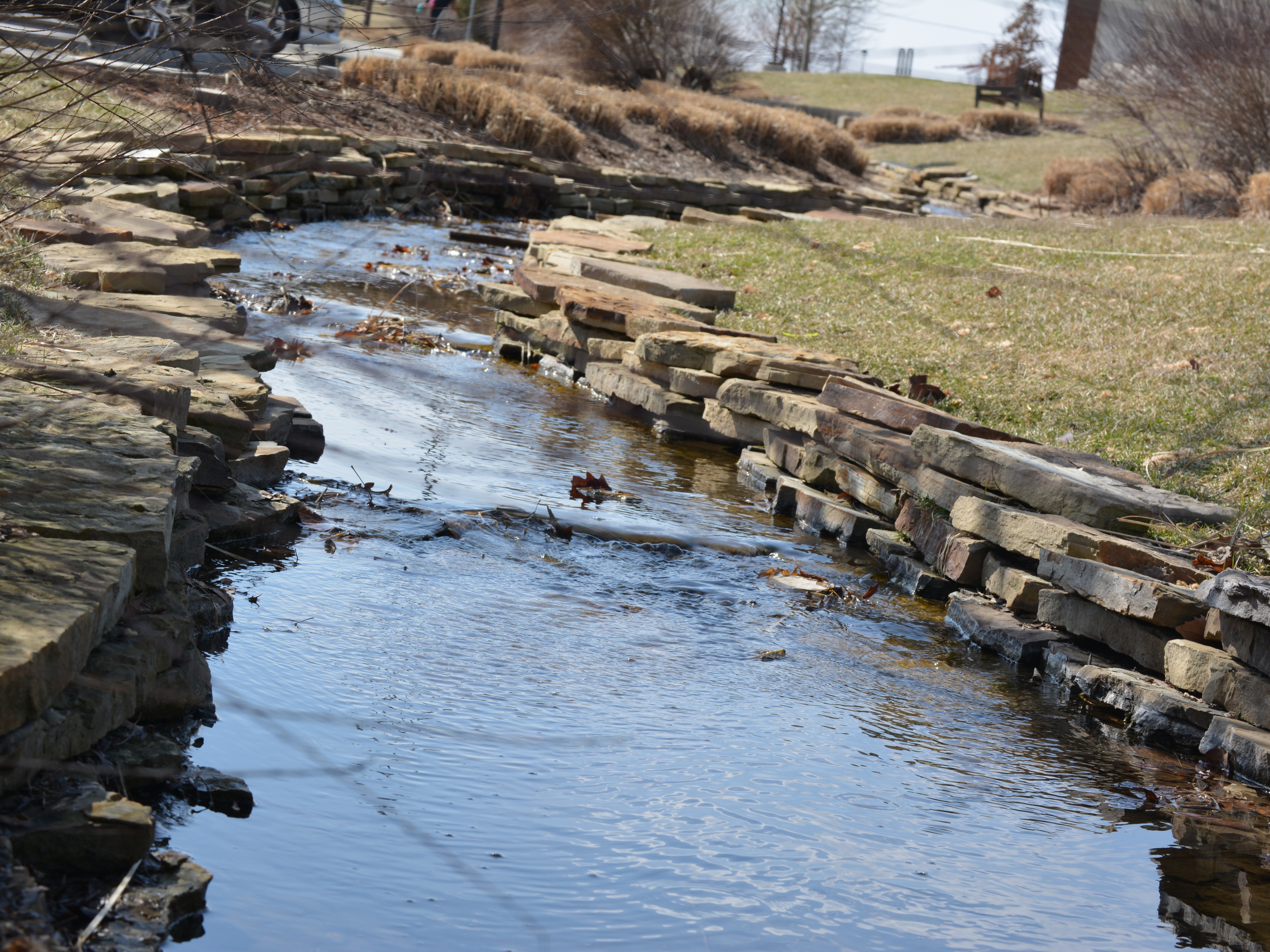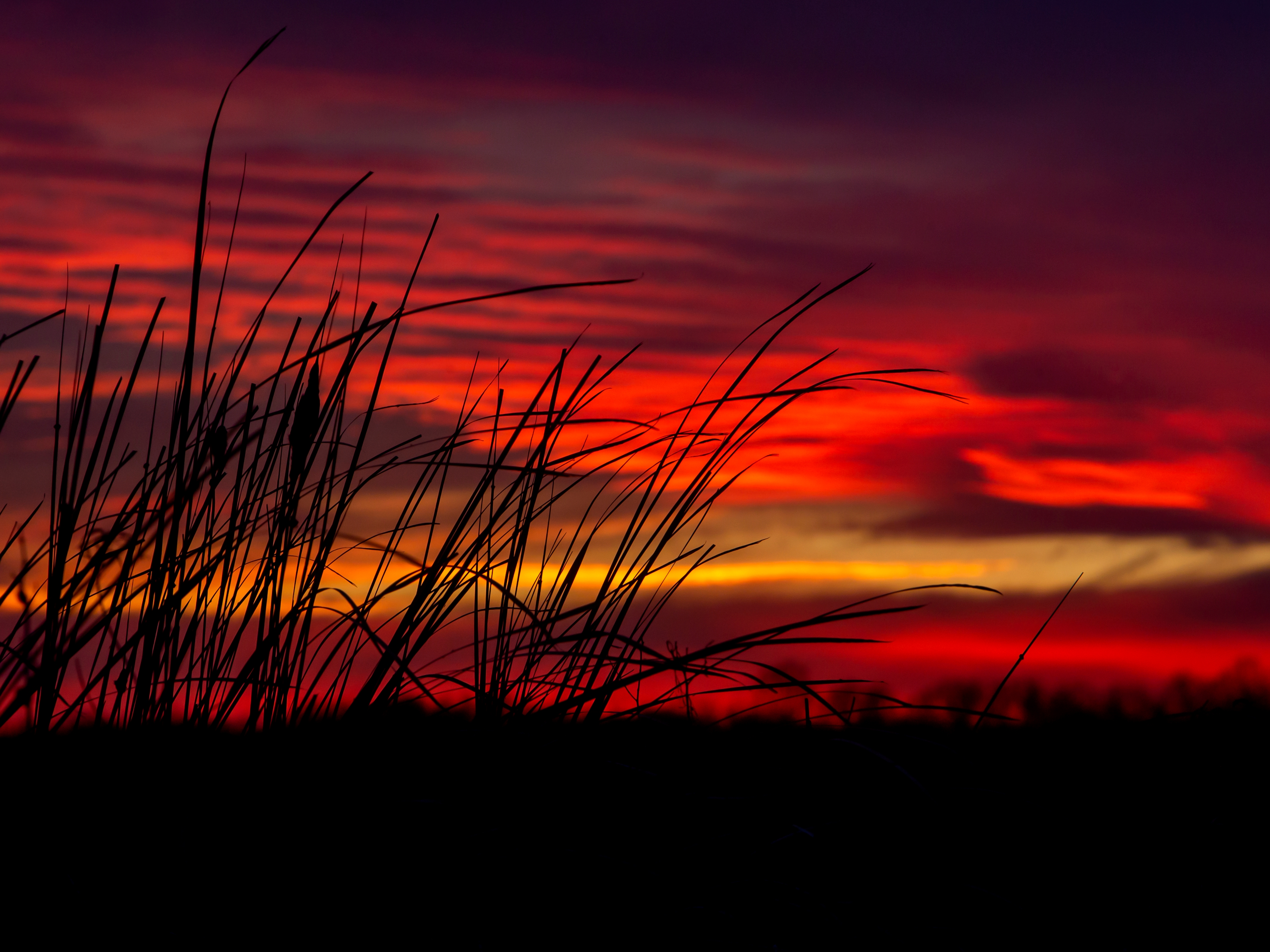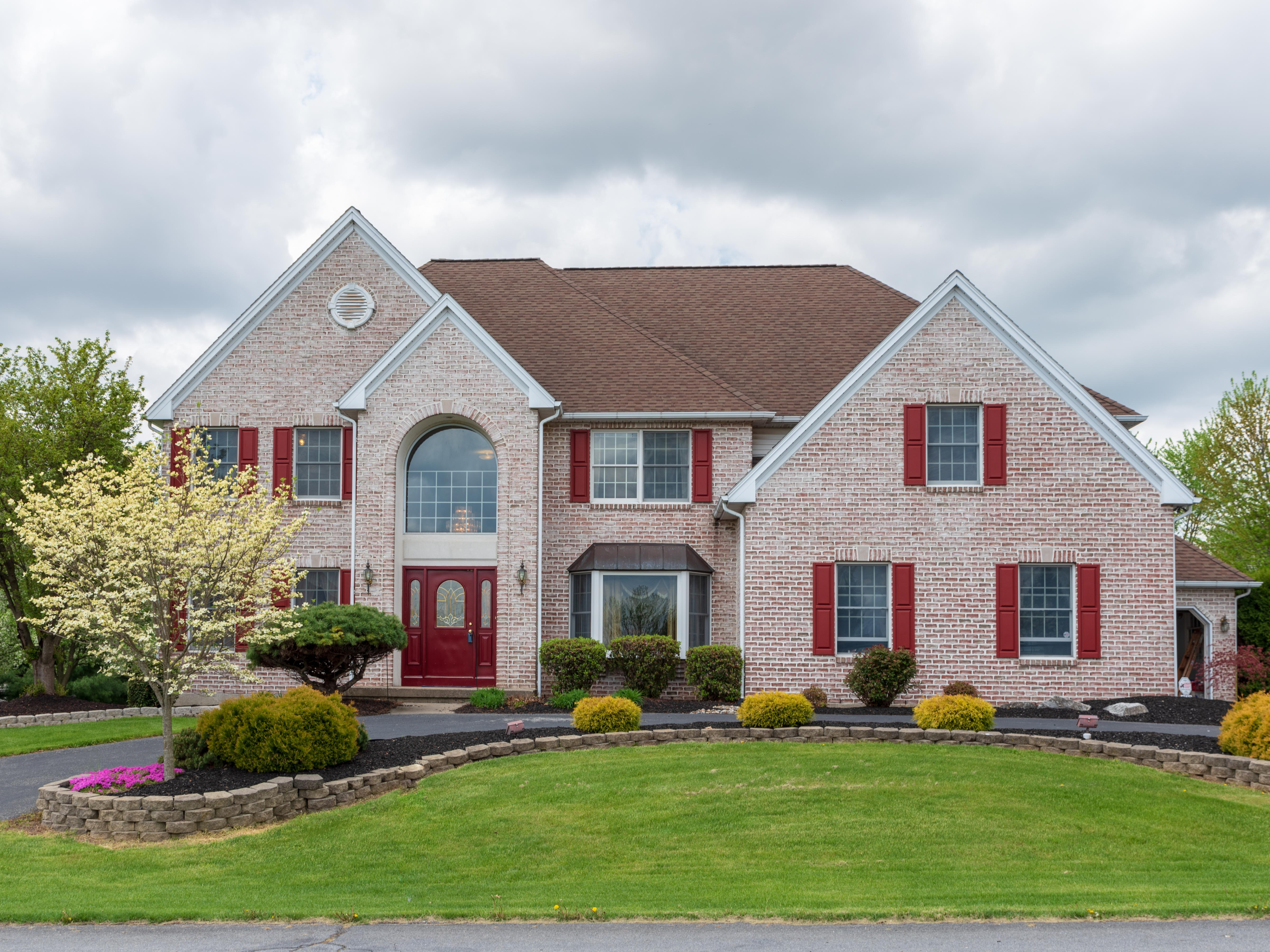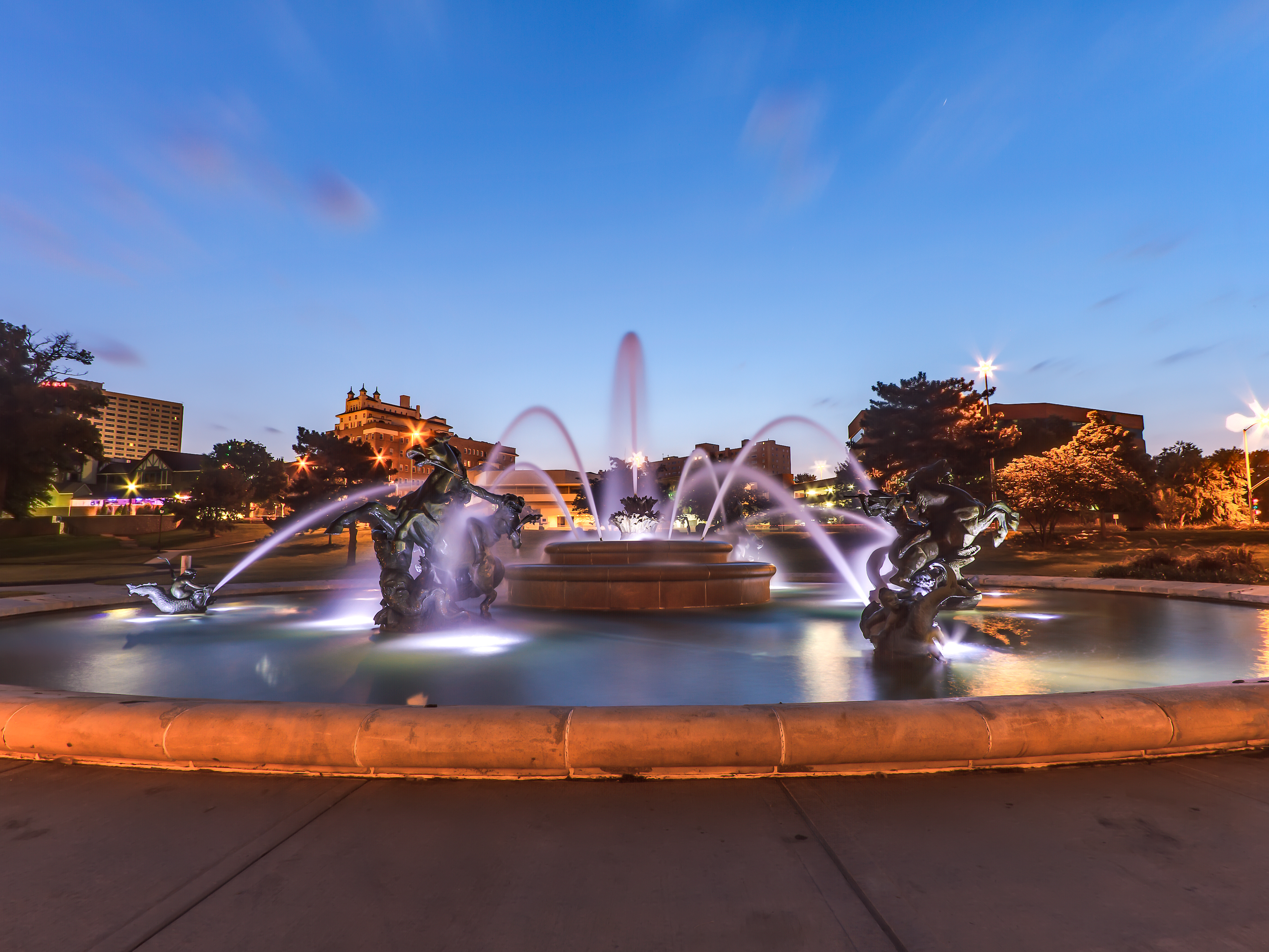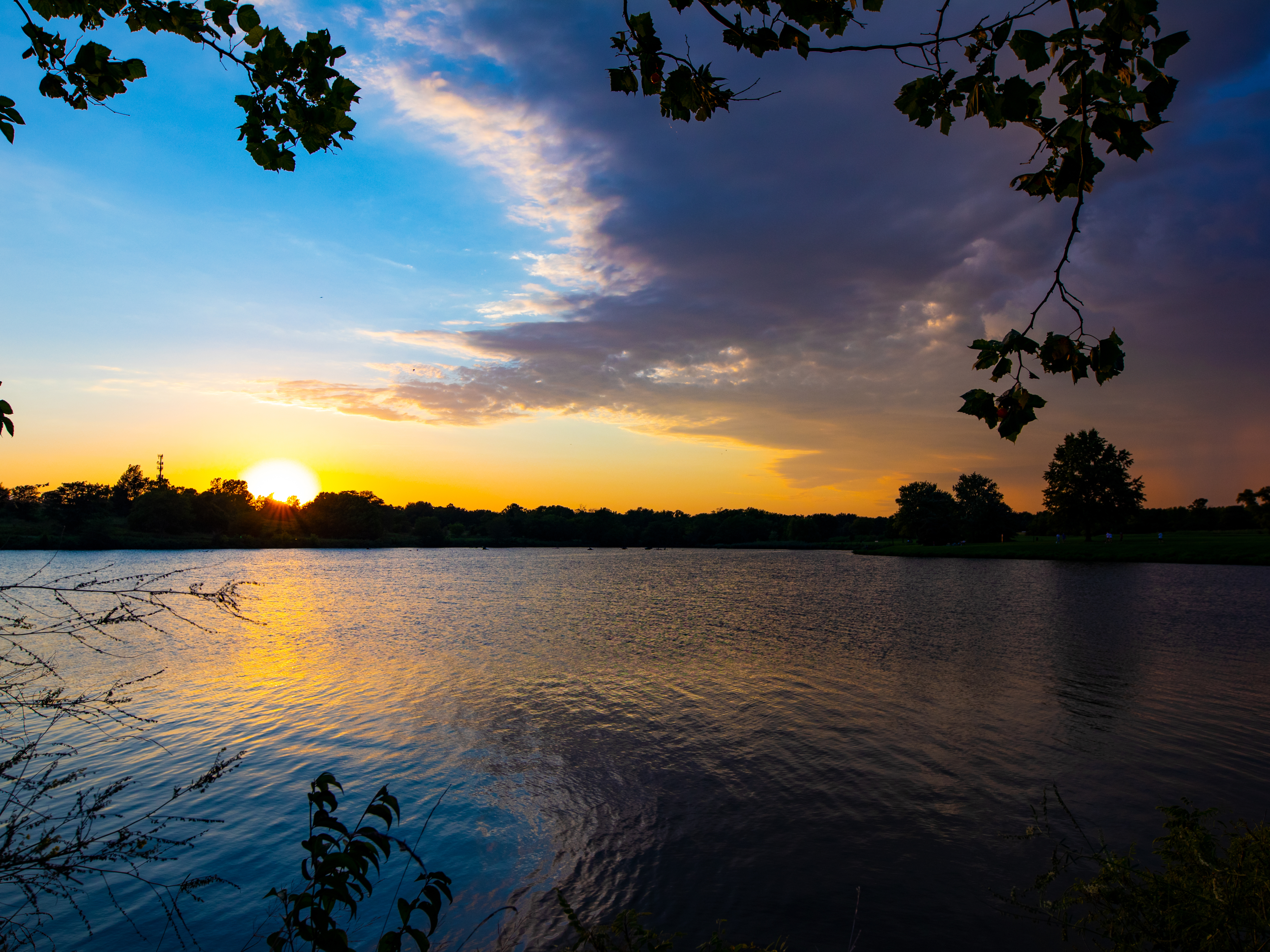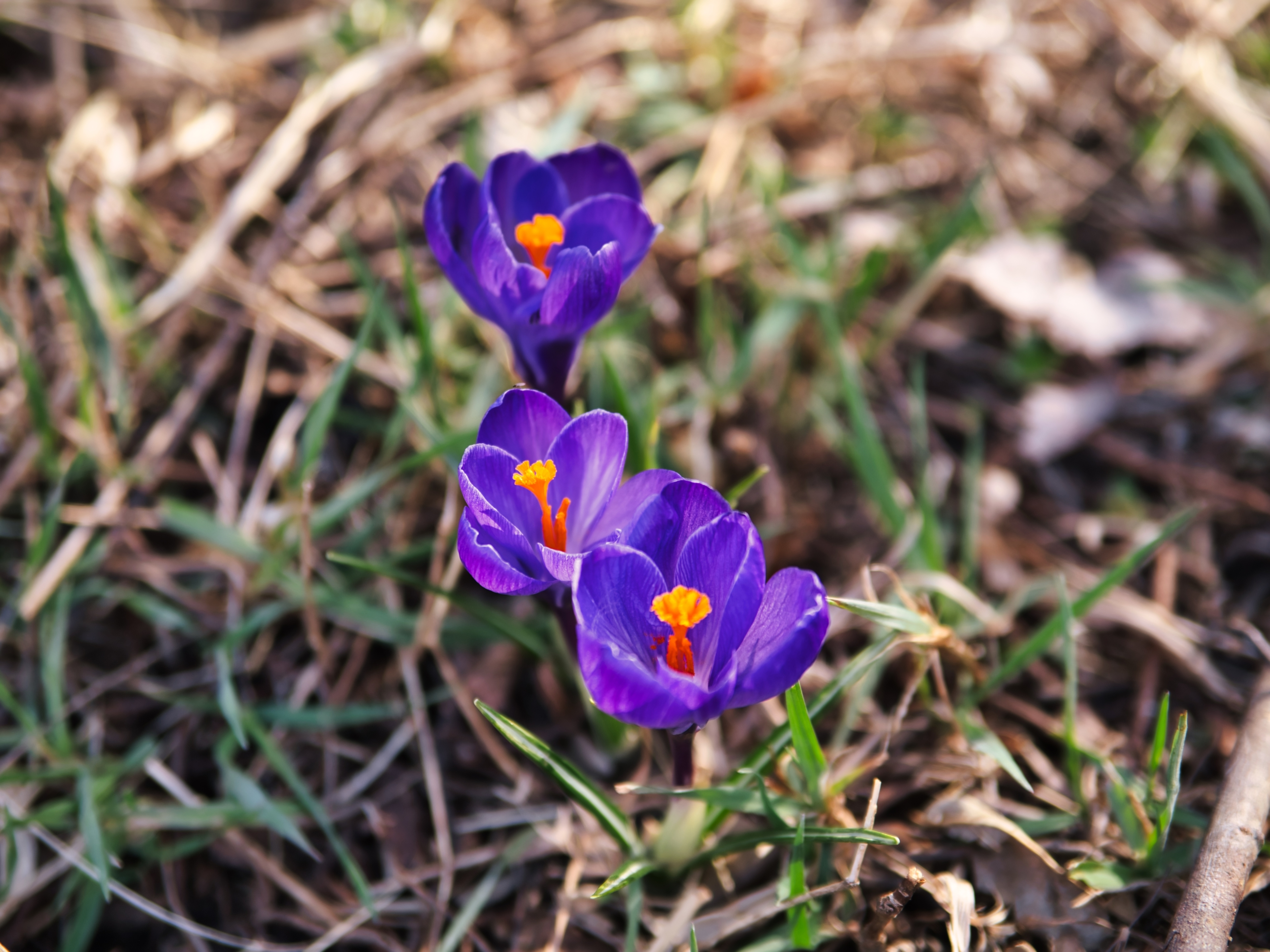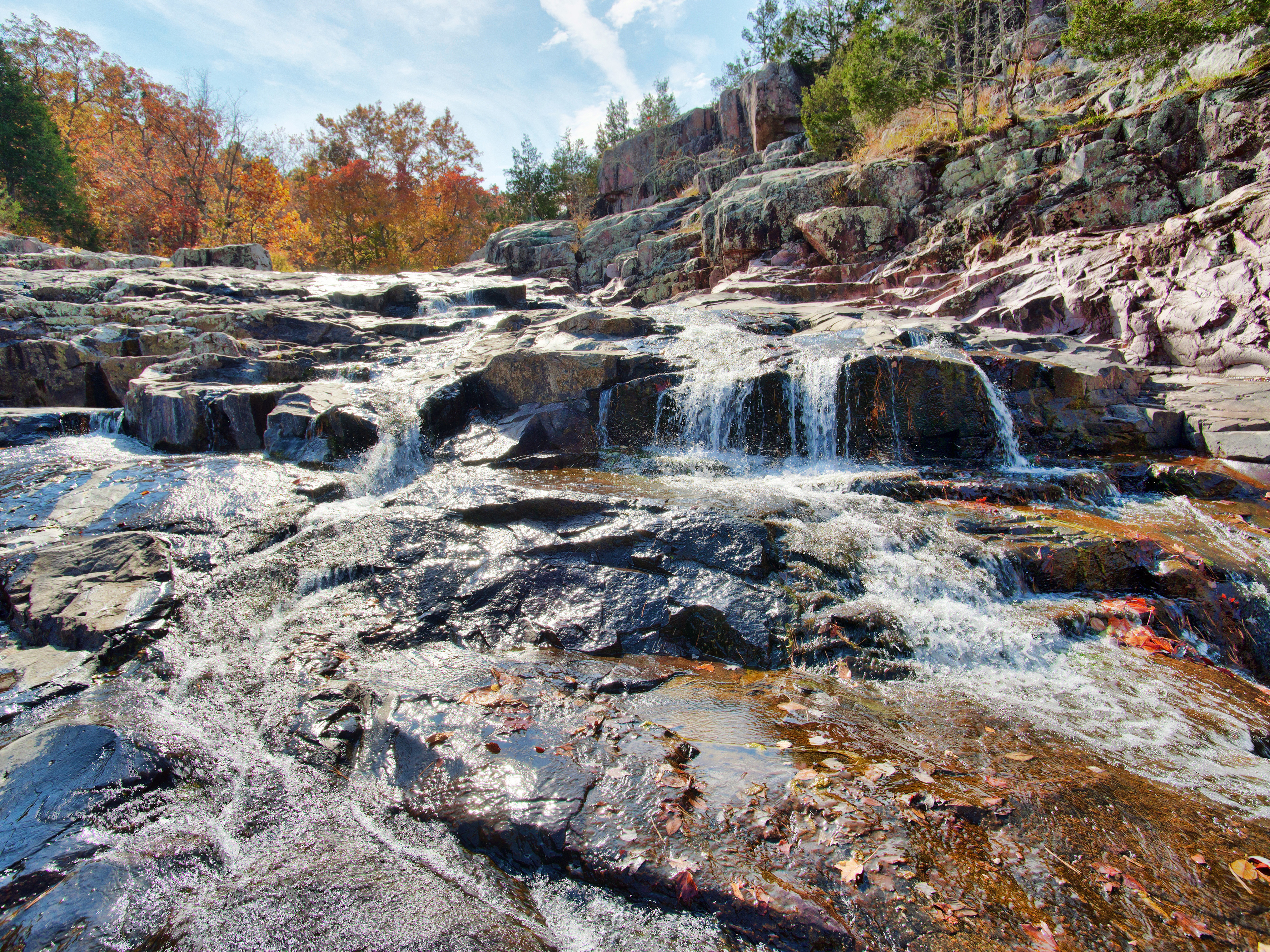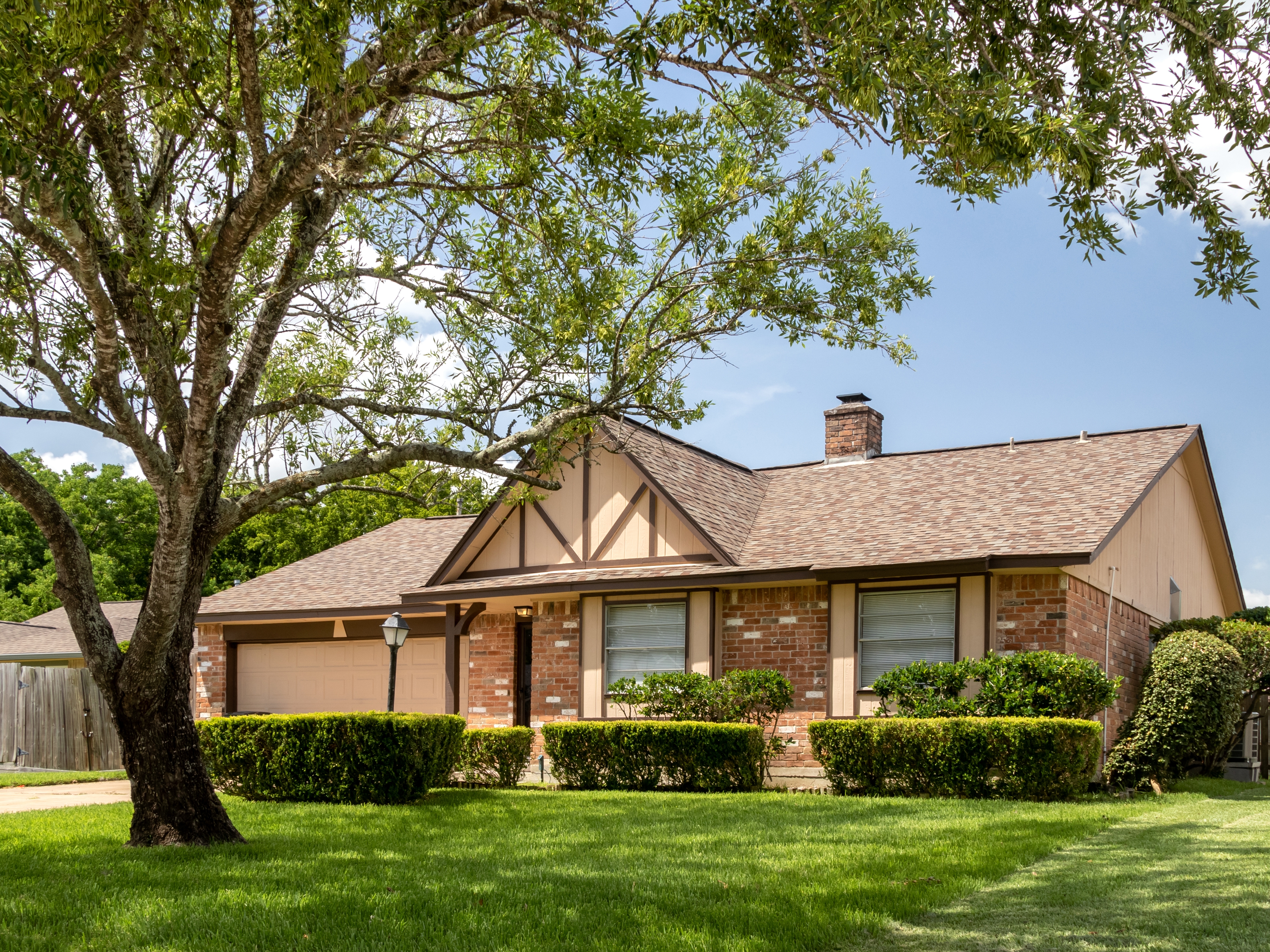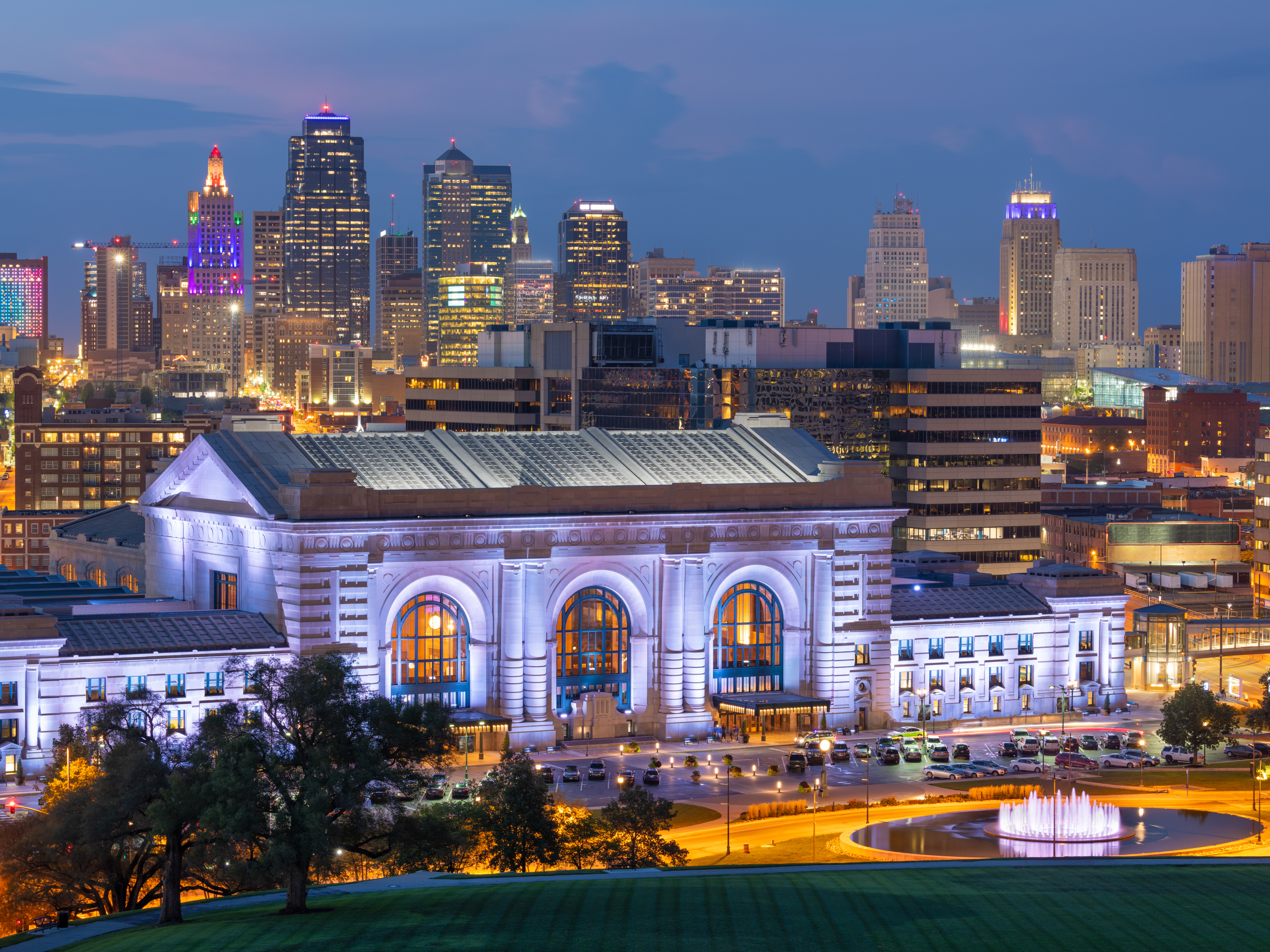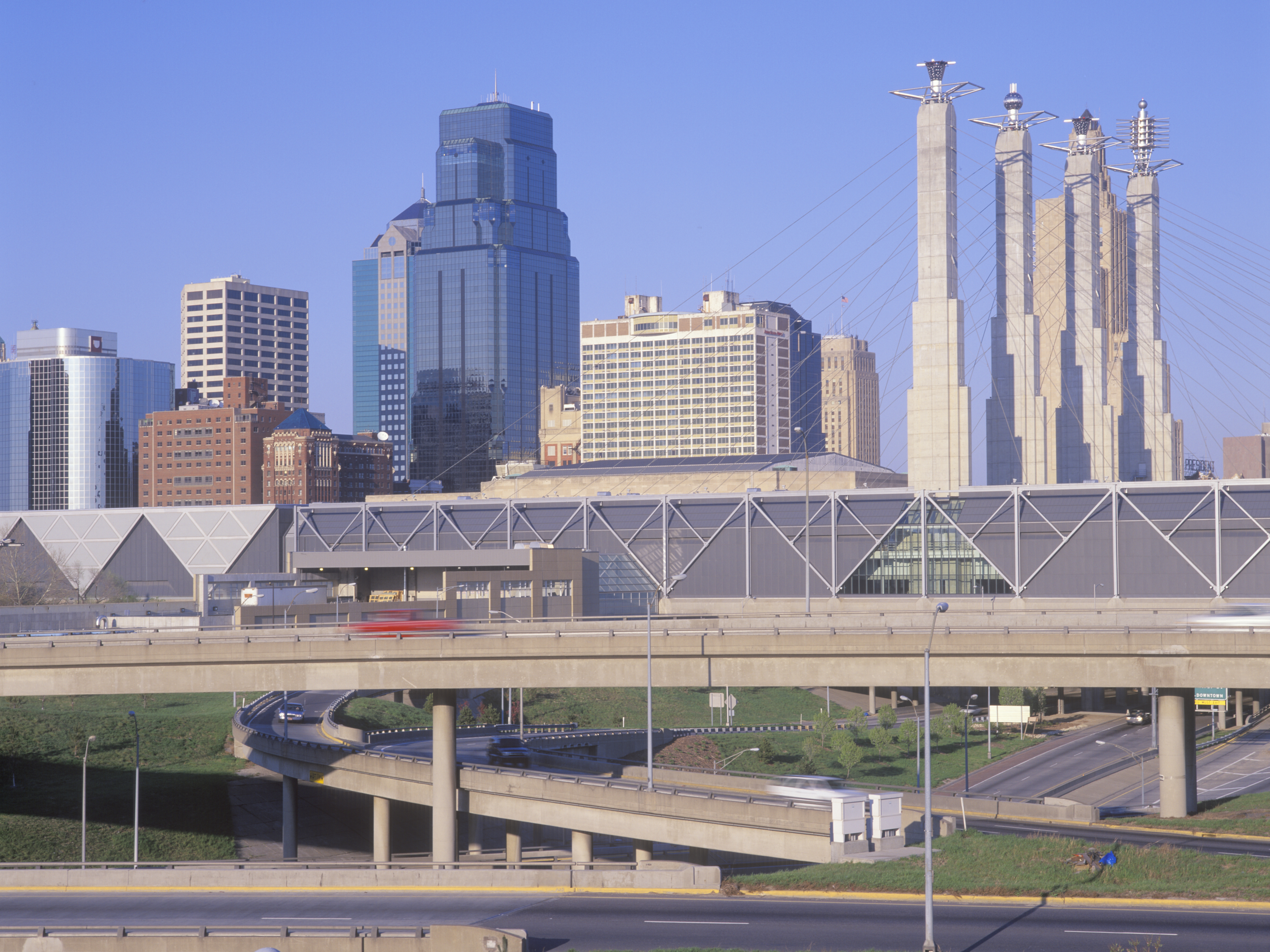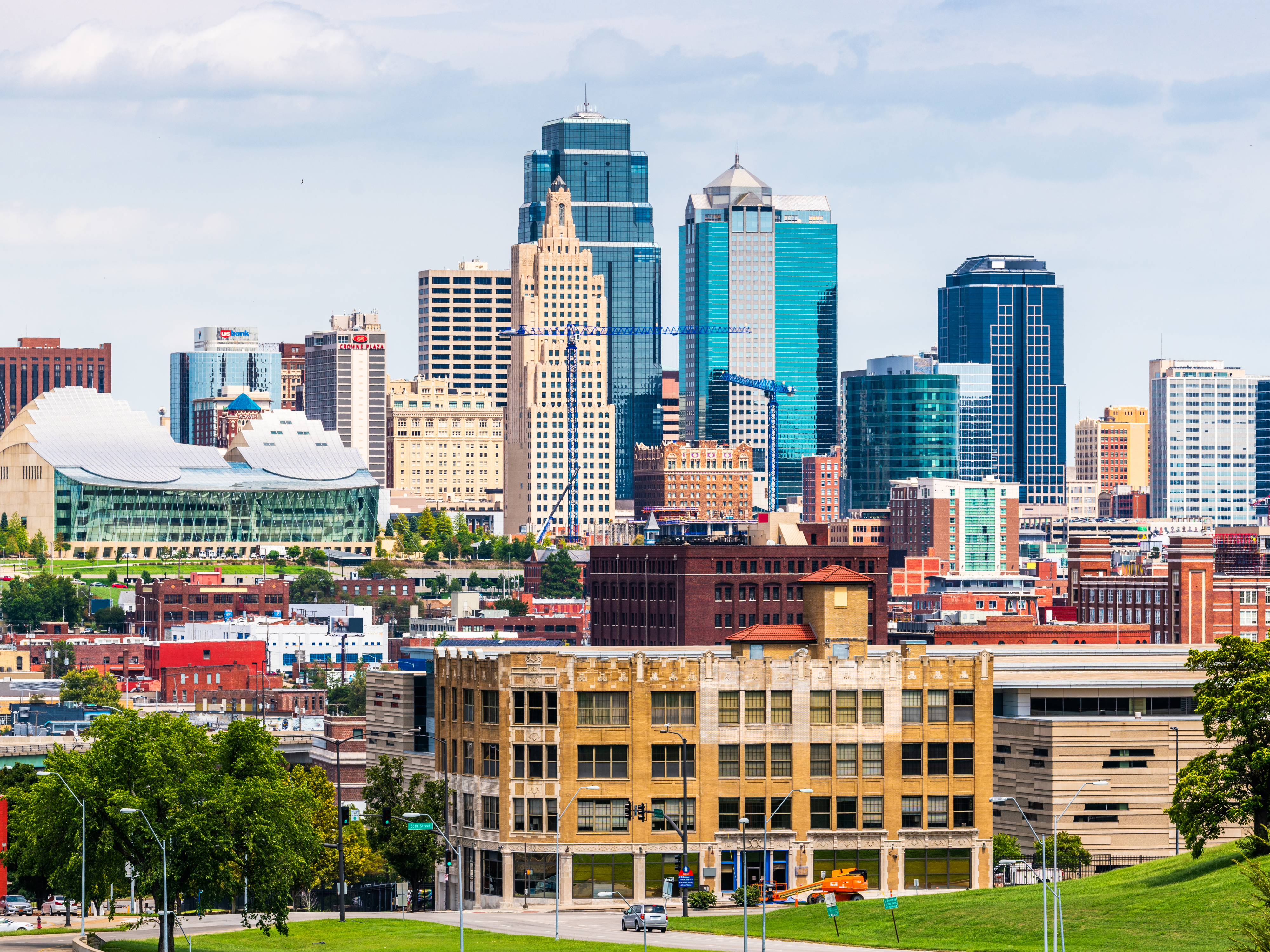
Welcome to Kansas City, MO
You found the right website if you are searching for homes for sale in Kansas City, MO. Our website has EVERY Kansas City home for sale in Missouri listed with Heartland (Kansas-Missouri) MLS.
Kansas City (abbreviated KC or KCMO) is the largest city in Missouri by population and area. Most of the city lies within Jackson County, with portions spilling into Clay, Cass, and Platte counties. The city is composed of several neighborhoods, including the River Market District in the north, the 18th and Vine District in the east, and the Country Club Plaza in the south.
Kansas City was founded in the 1830s as a port on the Missouri River at its confluence with the Kansas River coming in from the west. On June 1, 1850, the town of Kansas was incorporated; shortly after came the establishment of the Kansas Territory. Confusion between the two ensued, and the name Kansas City was assigned to distinguish them soon after.
Sitting on Missouri’s western boundary with Kansas, with Downtown near the confluence of the Kansas and Missouri Rivers, the city encompasses about 319.03 square miles, making it the 23rd largest city by total area in the United States. It serves as one of the two county seats of Jackson County, along with the major suburb of Independence. Other major suburbs include the Missouri cities of Blue Springs and Lee’s Summit and the Kansas cities of Overland Park, Olathe, Lenexa, and Kansas City, Kansas.
Celebrated cultural traditions include Kansas City jazz; theater, as a center of the Vaudevillian Orpheum circuit in the 1920s; the Chiefs and Royals sports franchises; and famous cuisine based on Kansas City-style barbecue, Kansas City strip steak, and craft breweries.
Kansas City, Missouri, was incorporated as a town on June 1, 1850, and as a city on March 28, 1853. The area, straddling the border between Missouri and Kansas at the confluence of the Kansas and Missouri rivers, was considered a good place to build settlements.
The Antioch Christian Church, Dr. James Compton House, and Woodneath are listed on the National Register of Historic Places.
Downtown Kansas City re-development
In the 21st century, the Kansas City area has undergone extensive redevelopment, with more than $6 billion in improvements to the downtown area on the Missouri side. One of the main goals is to attract convention and tourist dollars, office workers, and residents to downtown KCMO. Among the projects include the redevelopment of the Power & Light District, located in the area to the east of the Power & Light Building (the former headquarters of the Kansas City Power & Light Company, which is now based in the district’s northern end), into a retail and entertainment district; and the Sprint Center, an 18,500-seat arena that opened in 2007, funded by a 2004 ballot initiative involving a tax on car rentals and hotels, designed to meet the stadium specifications for a possible future NBA or NHL franchise, and was renamed T-Mobile Center in 2020; Kemper Arena, which was replaced by Sprint Center, fell into disrepair and was sold to private developers. By 2018, the arena was being converted to a sports complex under the name Hy-Vee Arena. The Kauffman Performing Arts Center opened in 2011 providing a new, modern home to the KC Orchestra and Ballet. In 2015, an 800-room Hyatt Convention Center Hotel was announced for a site next to the Performance Arts Center & Bartle Hall. Construction was scheduled to start in early 2018 with Loews as the operator.
From 2007 to 2017, downtown residential population in Kansas City quadrupled and continues to grow. The area has grown from almost 4,000 residents in the early 2000s to nearly 30,000 as of 2017. Kansas City’s downtown ranks as the 6th-fastest-growing downtown in America with the population expected to grow by more than 40% by 2022. Conversions of office buildings such as the Power & Light Building and the Commerce Bank Tower into residential and hotel space has helped to fulfill the demand. New apartment complexes like One, Two, and Three Lights, River Market West, and 503 Main have begun to reshape Kansas City’s skyline. Strong demand has led to occupancy rates in the upper 90%.
While the residential population of downtown has boomed, the office population has dropped significantly from the early 2000s to the mid 2010s. AMC and other top employers moved their operations to modern office buildings in the suburbs. High office vacancy plagued downtown, leading to the neglect of many office buildings. By the mid 2010s, many office buildings were converted to residential uses and the Class A vacancy rate plunged to 12% in 2017. Swiss Re, Virgin Mobile, AutoAlert, and others have begun to move operations to downtown Kansas City from the suburbs as well as expensive coastal cities.
Transportation developments
The area has seen additional development through various transportation projects, including improvements to the Grandview Triangle, which intersects Interstates 435 and 470, and U.S. Route 71.
In July 2005, the Kansas City Area Transportation Authority (KCATA) launched Kansas City’s first bus rapid transit line, the Metro Area Express (MAX), which links the River Market, Downtown, Union Station, Crown Center and the Country Club Plaza. The KCATA continues to expand MAX with additional routes on Prospect Avenue, Troost Avenue, and Independence Avenue.
In 2013, construction began on a two-mile streetcar line in downtown Kansas City (funded by a $102 million ballot initiative that was passed in 2012) that runs between the River Market and Union Station, it began operation in May 2016. In 2017, voters approved the formation of a TDD to expand the streetcar line south 3.5 miles from Union Station to UMKC’s Volker Campus. Additionally in 2017, the KC Port Authority began engineering studies for a Port Authority funded streetcar expansion north to Berkley Riverfront Park. Citywide, voter support for rail projects continues to grow with numerous light rail projects in the works.
In 2016, Jackson County, Missouri, acquired unused rail lines as part of a long-term commuter rail plan. For the time being, the line is being converted to a trail while county officials negotiate with railroads for access to tracks in Downtown Kansas City.
On November 7, 2017, Kansas City, Missouri, voters overwhelmingly approved a new single terminal at Kansas City International Airport by a 75% to 25% margin. The new single terminal will replace the three existing “Clover Leafs” at KCI Airport and is expected to open in March 2023.
The city has an area of 319.03 square miles (826.28 km2), of which, 314.95 square miles (815.72 km2) is land and 4.08 square miles (10.57 km2) is water. Bluffs overlook the rivers and river bottom areas. Kansas City proper is bowl-shaped and is surrounded to the north and south by glacier-carved limestone and bedrock cliffs. Kansas City is at the confluence between the Dakota and Minnesota ice lobes during the maximum late Independence glaciation of the Pleistocene epoch. The Kansas and Missouri rivers cut wide valleys into the terrain when the glaciers melted and drained. A partially filled spillway valley crosses the central city. This valley is an eastward continuation of the Turkey Creek Valley. It is the closest major city to the geographic center of the contiguous United States, or “Lower 48”.
Cityscape
Kansas City, Missouri, comprises more than 240 neighborhoods, some with histories as independent cities or as the sites of major events.
Architecture
The Nelson-Atkins Museum of Art opened its Euro-Style Bloch addition in 2007, and the Safdie-designed Kauffman Center for the Performing Arts opened in 2011. The Power and Light Building is influenced by the Art Deco style and sports a glowing sky beacon. The new world headquarters of H&R Block is a 20-story all-glass oval bathed in a soft green light. The four industrial artworks atop the support towers of the Kansas City Convention Center (Bartle Hall) were once the subject of ridicule, but now define the night skyline near the T-Mobile Center along with One Kansas City Place (Missouri’s tallest office tower), the KCTV-Tower (Missouri’s tallest freestanding structure) and the Liberty Memorial, a World War I memorial and museum that flaunts simulated flames and smoke billowing into the night skyline. It was designated as the National World War I Museum and Memorial in 2004 by the United States Congress. Kansas City is home to significant national and international architecture firms including ACI Boland, BNIM, 360 Architecture, HNTB, Populous. Frank Lloyd Wright designed two private residences and Community Christian Church there.
Kansas City hosts more than 200 working fountains, especially on the Country Club Plaza. Designs range from French-inspired traditional to modern. Highlights include the Black Marble H&R Block fountain in front of Union Station, which features synchronized water jets; the Nichols Bronze Horses at the corner of Main and J.C. Nichols Parkway at the entrance to the Plaza Shopping District; and the fountain at Hallmark Cards World Headquarters in Crown Center.
City Market
Since its inception in 1857, City Market has been one of the largest and most enduring public farmers’ markets in the American Midwest, linking growers and small businesses to the community. More than 30 full-time merchants operate year-round and offer specialty foods, fresh meats and seafood, restaurants and cafes, floral, home accessories and more. The City Market is also home to the Arabia Steamboat Museum, which houses artifacts from a steamboat that sank near Kansas City in 1856.
Downtown
Downtown Kansas City is an area of 2.9 square miles (7.5 km2) bounded by the Missouri River to the north, 31st Street to the south, Troost Avenue to the East, and State Line Road to the west. Areas near Downtown Kansas City include the 39th Street District, which is known as Restaurant Row, and features one of Kansas City’s largest selections of independently owned restaurants and boutique shops. It is a center of literary and visual arts, and bohemian culture. Crown Center is the headquarters of Hallmark Cards and a major downtown shopping and entertainment complex. It is connected to Union Station by a series of covered walkways. The Country Club Plaza, or simply “the Plaza”, is an upscale, outdoor shopping and entertainment district. It was the first suburban shopping district in the United States, designed to accommodate shoppers arriving by automobile, and is surrounded by apartments and condominiums, including a number of high rise buildings. The associated Country Club District to the south includes the Sunset Hill and Brookside neighborhoods, and is traversed by Ward Parkway, a landscaped boulevard known for its statuary, fountains and large, historic homes. Kansas City’s Union Station is home to Science City, restaurants, shopping, theaters, and the city’s Amtrak facility.
After years of neglect and seas of parking lots, Downtown Kansas City is undergoing a period of change with over $6 billion in development since 2000. Many residential properties recently have been or are under redevelopment in three surrounding warehouse loft districts and the Central Business District. The Power & Light District, a new, nine-block entertainment district comprising numerous restaurants, bars, and retail shops, was developed by the Cordish Company of Baltimore, Maryland. Its first tenant opened on November 9, 2007. It is anchored by the T-Mobile Center, a 19,000-seat sports and entertainment complex.
From 2010 to 2018 the Kansas side of the area had over double the GDP growth as the Missouri side at 23.8% vs 9.1% according to the BEA, although the Missouri portion is still leading in total non-farm employment. The federal government is the largest employer in the Kansas City metro area. More than 146 federal agencies maintain a presence there. Kansas City is one of ten regional office cities for the US government. The Internal Revenue Service maintains a large service center in Kansas City that occupies nearly 1.4 million square feet (130,000 m2). It is one of only two sites to process paper returns. The IRS has approximately 2,700 full-time employees in Kansas City, growing to 4,000 during tax season. The General Services Administration has more than 800 employees. Most are at the Bannister Federal Complex in South Kansas City. The Bannister Complex was also home to the Kansas City Plant, which is a National Nuclear Security Administration facility operated by Honeywell. The Kansas City Plant has since been moved to a new location on Botts Road. Honeywell employs nearly 2,700 at the Kansas City Plant, which produces and assembles 85% of the non-nuclear components of the United States nuclear bomb arsenal. The Social Security Administration has more than 1,700 employees in the Kansas City area, with more than 1,200 at its downtown Mid-America Program Service Center (MAMPSC). The United States Postal Service operates post offices in Kansas City. The Kansas City Main Post Office is at 300 West Pershing Road.
In 2019, the US Department of Agriculture relocated two federal research labs, ERS and NIFA, to the metro area. This move was considered controversial at the time of announcement, and resulted in multiple people leaving the agencies. The new location for these agencies will be in the downtown area.
Ford Motor Company operates a large manufacturing facility in Claycomo at the Ford Kansas City Assembly Plant, which builds the Ford F-150. The General Motors Fairfax Assembly Plant is in adjacent Kansas City, Kansas. Now shuttered Smith Electric Vehicles built electric vehicles in the former TWA/American Airlines overhaul facility at Kansas City International Airport until 2017.
One of the largest US drug manufacturing plants is the Sanofi-Aventis plant in south Kansas City on a campus developed by Ewing Kauffman’s Marion Laboratories. Of late, it has been developing academic and economic institutions related to animal health sciences, an effort most recently bolstered by the selection of Manhattan, Kansas, at one end of the Kansas City Animal Health Corridor, as the site for the National Bio and Agro-Defense Facility, which researches animal diseases. Additionally, the Stowers Institute for Medical Research engages in medical basic science research. They offer educational opportunities for both predoctoral and postdoctoral candidates and work with Open University and University of Kansas Medical Center in a joint Interdisciplinary Graduate Program in Biomedical Science (IGPBS).
Numerous agriculture companies operate out of the city. Dairy Farmers of America, the largest dairy co-op in the United States is located in northern Kansas City. The National Association of Intercollegiate Athletics and The National Association of Basketball Coaches are based in Kansas City.
The business community is serviced by two major business magazines, the Kansas City Business Journal (published weekly) and Ingram’s Magazine (published monthly), as well as other publications, including a local society journal, the Independent (published weekly).
The Kansas City Federal Reserve Bank built a new building that opened in 2008 near Union Station. Missouri is the only state to have two of the 12 Federal Reserve Bank headquarters (the second is in St. Louis). Kansas City’s effort to get the bank was helped by former mayor James A. Reed, who as senator, broke a tie to pass the Federal Reserve Act.
The national headquarters for the Veterans of Foreign Wars is headquartered just south of Downtown.
With a Gross Metropolitan Product of $41.68 billion in 2004, Kansas City’s (Missouri side only) economy makes up 20.5% of Missouri’s gross state product. In 2014, Kansas City was ranked #6 for real estate investment.
Three international law firms, Lathrop & Gage, Stinson Leonard Street, and Shook, Hardy & Bacon are based in the city.
Abbreviations and nicknames
Kansas City, Missouri is abbreviated as KCMO and the metropolitan area as KC. Residents are known as Kansas Citians. Kansas City, Missouri is officially nicknamed the “City of Fountains”. The fountains at Kauffman Stadium, commissioned by original Kansas City Royals owner Ewing Kauffman, are the largest privately funded fountains in the world. In 2018, UNESCO designated Kansas City as a City of Music. The city has more boulevards than any other city except Paris and has been called “Paris of the Plains”. Soccer’s popularity, at both professional and youth levels, as well as Children’s Mercy Park’s popularity as a home stadium for the U.S. Men’s National Team led to the appellation “Soccer Capital of America”. The city is called the “Heart of America”, as it is near both the population center of the United States and the geographic center of the 48 contiguous states.
Performing arts
There were only two theaters in Kansas City when David Austin Latchaw, originally from rural Pennsylvania, moved to Kansas City in 1886. Latchaw maintained friendly relations with a number of actors such as Otis Skinner, Richard Mansfield, Maude Adams, Margaret Anglin, John Drew, Minnie Maddern Fiske, Julia Marlowe, E. H. Sothern, and Robert Mantell.
Theater troupes in the 1870s toured the state performing in cities or small towns springing up along the railroad lines. Rail transport had made touring easy allowing theater troupes to travel with costumes, props and sets. As theater grew in popularity after the mid-1880s that number increased and by 1912 ten new theaters had been built in Kansas City.
By the 1920s Kansas City was the center of the vaudevillian Orpheum circuit.
The Kansas City Repertory Theatre is the metropolitan area’s top professional theatre company. The Starlight Theatre is an 8,105-seat outdoor theatre designed by Edward Delk. The Kansas City Symphony was founded by R. Crosby Kemper Jr. in 1982 to replace the defunct Kansas City Philharmonic, which was founded in 1933. The symphony performs at the Kauffman Center for the Performing Arts. Michael Stern is the symphony’s music director and lead conductor. Lyric Opera of Kansas City, founded in 1958, performs at the Kauffman Center, offers one American contemporary opera production during its season, consisting of either four or five productions. The Civic Opera Theater of Kansas City performs at the downtown Folly Theater and at the UMKC Performing Arts Center. Every summer from mid-June to early July, The Heart of America Shakespeare Festival performs at Southmoreland Park near the Nelson-Atkins Museum; the festival was founded by Marilyn Strauss in 1993.
The Kansas City Ballet, founded in 1957 by Tatiana Dokoudovska, is a ballet troupe comprising 25 professional dancers and apprentices. Between 1986 and 2000, it combined with Dance St. Louis to form the State Ballet of Missouri, although it remained in Kansas City. From 1980 to 1995, the Ballet was run by dancer and choreographer Todd Bolender. Today, the Ballet offers an annual repertory split into three seasons, performing classical to contemporary ballets. The Ballet also performs at the Kauffman Center. Kansas City is home to The Kansas City Chorale, a professional 24-voice chorus conducted by Charles Bruffy. The chorus performs an annual concert series and a concert in Phoenix each year with their sister choir, the Phoenix Chorale. The Chorale has made nine recordings (three with the Phoenix Chorale).
Jazz
Kansas City jazz in the 1930s marked the transition from big bands to the bebop influence of the 1940s. The 1979 documentary The Last of the Blue Devils portrays this era in interviews and performances by local jazz notables. In the 1970s, Kansas City attempted to resurrect the glory of the jazz era in a family-friendly atmosphere. In the 1970s, an effort to open jazz clubs in the River Quay area of City Market along the Missouri ended in a gang war. Three of the new clubs were blown up in what ultimately ended Kansas City mob influence in Las Vegas casinos. The annual “Kansas City Blues and Jazz Festival” attracts top jazz stars and large out-of-town audiences. It was rated Kansas City’s “best festival” by Pitch.com.
Live music venues are found throughout the city, with the highest concentration in the Westport entertainment district centered on Broadway and Westport Road near the Country Club Plaza, as well as the 18th and Vine area’s flourish for jazz music. A variety of music genres can be heard or have originated there, including musicians Janelle Monáe, Puddle of Mudd, Isaac James, The Get Up Kids, Shiner, Flee The Seen, The Life and Times, Reggie and the Full Effect, Coalesce, The Casket Lottery, The Gadjits, The Rainmakers, Vedera, The Elders, Blackpool Lights, The Republic Tigers, Tech N9ne, Krizz Kaliko, Kutt Calhoun, Skatterman & Snug Brim, Mac Lethal, Ces Cru, and Solè. As of 2003, the Kansas City Jazz Orchestra, a big band jazz orchestra, performs in the metropolitan area.
In 2018, UNESCO named Kansas City as a “City of Music”, making it the only city in the United States with that distinction. The city’s funding of $7 million for improvements to the 18th and Vine Jazz District in 2016, coupled with the city’s rich musical heritage, contributed to the designation.
Irish culture
The large community of Irish-Americans numbers over 50,000. The Irish were the first large immigrant group to settle in Kansas City following the lead of Fr. Bernard Donnelly (c. 1800-1880) and founded its first newspaper. The Irish community includes bands, dancers, Irish stores, newspapers and the Kansas City Irish Center at Drexel Hall in Midtown. The first book that detailed the history of the Irish in Kansas City was Missouri Irish: Irish Settlers on the American Frontier, published in 1984. The Kansas City Irish Fest is held over Labor Day weekend every year in Crown Center and Washington Park.
Casinos
Missouri voters approved riverboat casino gaming on the Missouri and Mississippi Rivers by referendum with a 63% majority on November 3, 1992. The first casino facility in the state opened in September 1994 in North Kansas City by Harrah’s Entertainment (now Caesar’s Entertainment). The combined revenues for four casinos exceeded $153 million per month in May 2008. The metropolitan area is home to six casinos: Ameristar Kansas City, Argosy Kansas City, Harrah’s North Kansas City, Isle of Capri Kansas City, the 7th Street Casino (which opened in Kansas City, Kansas, in 2008) and Hollywood Casino (which opened in February 2012 in Kansas City, Kansas).
Cuisine
Kansas City is famous for its steak and Kansas City-style barbecue, along with the typical array of Southern cuisine. During the heyday of the Kansas City Stockyards, the city was known for its Kansas City steaks or Kansas City strip steaks. The most famous of its steakhouses is the Golden Ox in the Kansas City Live Stock Exchange in the West Bottoms stockyards. These stockyards were second only to those of Chicago in size, but they never recovered from the Great Flood of 1951 and eventually closed. Founded in 1938, Jess & Jim’s Steakhouse in the Martin City neighborhood was also well known.
The Kansas City Strip cut of steak is similar to the New York Strip cut, and is sometimes referred to just as a strip steak. Along with Texas, Memphis, North, and South Carolina, Kansas City is lauded as a “world capital of barbecue”. More than 90 barbecue restaurants operate in the metropolitan area. The American Royal each fall hosts what it claims is the world’s biggest barbecue contest.
Classic Kansas City-style barbecue was an inner-city phenomenon that evolved from the pit of Henry Perry, a migrant from Memphis who is generally credited with opening the city’s first barbecue stand in 1921, and blossomed in the 18th and Vine neighborhood. Arthur Bryant’s took over the Perry restaurant and added sugar to his sauce to sweeten the recipe a bit. In 1946 one of Perry’s cooks, George W. Gates, opened Gates Bar-B-Q, later Gates and Sons Bar-B-Q when his son Ollie joined the family business. Bryant’s and Gates are the two definitive Kansas City barbecue restaurants; native Kansas Citian and essayist Calvin Trillin famously called Bryant’s “the single best restaurant in the world” in an essay he wrote for Playboy magazine in the 1960s. Fiorella’s Jack Stack Barbecue is also well regarded. In 1977, Rich Davis, a psychiatrist, test-marketed his own concoction called K.C. Soul Style Barbecue Sauce. He renamed it KC Masterpiece, and in 1986, he sold the recipe to the Kingsford division of Clorox. Davis retained rights to operate restaurants using the name and sauce, whose recipe popularized the use of molasses as a sweetener in Kansas City-style barbecue sauces.
Kansas City has several James Beard Award-winning/nominated chefs and restaurants. Winning chefs include Michael Smith, Celina Tio, Colby Garrelts, Debbie Gold, Jonathan Justus and Martin Heuser. A majority of the Beard Award-winning restaurants are in the Crossroads district, downtown and in Westport.
Professional sports teams in Kansas City include the Kansas City Chiefs in the National Football League (NFL), the Kansas City Royals in Major League Baseball (MLB) and Sporting Kansas City in Major League Soccer (MLS).
Professional football
The Chiefs, now a member of the NFL’s American Football Conference, started play in 1960 as the Dallas Texans of the American Football League before moving to Kansas City in 1963. The Chiefs lost Super Bowl I to the Green Bay Packers by a score of 35–10. They came back in 1969 to become the last AFL champion and win Super Bowl IV against the NFL champion Minnesota Vikings by a score of 23–7. In 2020, after 50 years, they won Super Bowl LIV with the score of 31–20 against the San Francisco 49ers. In 2021, they lost Super Bowl LV to the Tampa Bay Buccaneers by a score of 31–9.
Professional baseball
The Athletics baseball franchise played in the city from 1955, after moving from Philadelphia, to 1967, when the team relocated to Oakland, California. The city’s current Major League Baseball franchise, the Royals, started play in 1969, and are the only major league sports franchise in Kansas City that has not relocated or changed its name. The Royals were the first American League expansion team to reach the playoffs (in 1976) to reach the World Series (in 1980) and to win the World Series (in 1985). The Royals returned to the World Series in 2014 and won in 2015.
The Kansas City Monarchs, formerly the Kansas City T-Bones, are an unaffiliated minor league team. They played in the independent Northern League from 2003 until 2010 and have been part of the independent American Association since 2011. They play their games at Legends Field in Kansas City, Kansas.
Professional soccer
The Kansas City Wiz became a charter member of Major League Soccer in 1996. It was renamed the Kansas City Wizards in 1997. In 2011, the team was renamed Sporting Kansas City and moved to its new stadium Children’s Mercy Park in Kansas City, Kansas. They have won the MLS Cup twice, the Supporters’ Shield once, and the US Open Cup four times. FC Kansas City played from 2013-2017 in the National Women’s Soccer League; the team’s home games were held at Swope Soccer Village. They won the NWSL in 2014 and 2015. The team folded after the 2017 season and its assets were transferred to Utah Royals FC. After the 2020 season, the Utah Royals folded and its assets were transferred to a new Kansas City team, now known as the Kansas City Current. The Current moved to Children’s Mercy Park after spending their first season at Legends Field, where they were known as KC NWSL.
Kansas City was selected on June 16, 2022 as one of the eleven US host cities for the 2026 FIFA World Cup.
College athletics
In college athletics, Kansas City has been the home of the Big 12 College Basketball Tournaments. The men’s tournament has been played at T-Mobile Center since March 2008. The women’s tournament is played at Municipal Auditorium.
The city has one NCAA Division I program, the Kansas City Roos, representing the University of Missouri–Kansas City (UMKC). The program, historically known as the UMKC Kangaroos, adopted its current branding after the 2018–19 school year.
In addition to serving as the home stadium of the Chiefs, Arrowhead Stadium serves as the venue for various intercollegiate football games. It has hosted the Big 12 Championship Game five times. On the last weekend in October, the MIAA Fall Classic rivalry game between Northwest Missouri State University and Pittsburg State University took place at the stadium.
Professional rugby
Kansas City is represented on the rugby pitch by the Kansas City Blues RFC, a former member of the Rugby Super League and a Division 1 club. The team works closely with Sporting Kansas City and splits home-games between Sporting’s training pitch and Rockhurst University’s stadium.
Former teams
Kansas City briefly had four short-term major league baseball teams between 1884 and 1915: the Kansas City Unions of the short-lived Union Association in 1884, the Kansas City Cowboys in the National League in 1886, a team of the same name in the then-major league American Association in 1888 and 1889, and the Kansas City Packers in the Federal League in 1914 and 1915. The Kansas City Monarchs of the now-defunct Negro National and Negro American Leagues represented Kansas City from 1920 through 1955. The city also had a number of minor league baseball teams between 1885 and 1955. After the Kansas City Cowboys began play in the 1885 Western League, from 1903 through 1954, the Kansas City Blues played in the high-level American Association minor league. In 1955, Kansas City became a major league city when the Philadelphia Athletics baseball franchise relocated to the city in 1955. Following the 1967 season, the team relocated to Oakland, California.
Kansas City was represented in the National Basketball Association by the Kansas City Kings (called the Kansas City-Omaha Kings from 1972 to 1975), when the former Cincinnati Royals moved to the Midwest. The team left for Sacramento in 1985.
In 1974, the National Hockey League placed an expansion team in Kansas City called the Kansas City Scouts. The team moved to Denver in 1976, then to New Jersey in 1982 where they have remained ever since as the New Jersey Devils.
Kansas City has 132 miles (212 km) of boulevards and parkways, 214 urban parks, 49 ornamental fountains, 152 ball diamonds, 10 community centers, 105 tennis courts, 5 golf courses, 5 museums and attractions, 30 pools, and 47 park shelters. These amenities are found across the city. Much of the system, designed by George E. Kessler, was constructed from 1893 to 1915.
Cliff Drive, in Kessler Park on the North Bluffs, is a designated State Scenic Byway. It extends 4.27 miles (6.87 km) from The Paseo and Independence Avenue through Indian Mound on Gladstone Boulevard at Belmont Boulevard, with many historical points and architectural landmarks.
Ward Parkway, on the west side of the city near State Line Road, is lined by many of the city’s largest and most elaborate homes.
The Paseo is a major north–south parkway that runs 19 miles (31 km) through the center of the city beginning at Cliff Drive. It was modeled on the Paseo de la Reforma, a fashionable Mexico City boulevard. It has been recently renamed Martin Luther King Jr. Boulevard and now the city has voted to change it back to the Paseo.
Swope Park is one of the nation’s largest city parks, comprising 1,805 acres (3 sq mi), more than twice the size of New York City’s Central Park. It features a zoo, a woodland nature and wildlife rescue center, 2 golf courses, 2 lakes, an amphitheatre, a day-camp, and numerous picnic grounds. Hodge Park, in the Northland, covers 1,029 acres (416 ha) (1.61 sq. mi.). This park includes the 80-acre (320,000 m2) Shoal Creek Living History Museum, a village of more than 20 historical buildings dating from 1807 to 1885. Berkely Riverfront Park, 955 acres (3.86 km2) on the banks of the Missouri River on the north edge of downtown, holds annual Independence Day celebrations and other festivals.
A program went underway to replace many of the fast-growing sweetgum trees with hardwood varieties.
Civil Engineering Landmark
In 1974, the Kansas City Park and Boulevard System was recognized by the American Society of Civil Engineers (ASCE) as a National Historic Civil Engineering Landmark. The nomination noted that this park system was among “…the first to integrate the aesthetics of landscape architecture with the practicality of city planning, stimulating other metropolitan areas to undertake similar projects.” The park’s plan developed by landscape architect George Kessler included some of the “…first specifications for pavements, gutters, curbs, and walks. Other engineering advances included retaining walls, earth dams, subsurface drains, and an impoundment lake – all part of Kansas City’s legacy that has influenced urban planning in cities throughout North America.”
Nearby Schools
Buying a Kansas City, MO Home?
If you are a Kansas City, MO home buyer, our foremost goal is to provide you with exceptional customer service. Our goals are to help you purchase the right home, make sure you don’t miss out on any homes that meet your needs, and make sure you don’t pay too much for your next home. Please utilize our Kansas City, Missouri real estate expertise to make your home search and buying experience as stress free and rewarding for you and your family as possible.
Selling Your Kansas City, MO Home?
If you're considering selling your Kansas City, Missouri home, we utilize the latest, cutting-edge, real estate marketing tools to expose your property to the widest range of potential buyers. We are here to get your house aggressively marketed to sell as quickly as possible and for the best price! Our goals are to help you get your Kansas City, MO home sold, put you in the strongest negotiating position as possible, and to make it easier for you and reduce surprises.

